Sigeumchi namul is a super easy and deliciously tasty banchan side dish. Ready in 10 minutes, try this classic Korean seasoned spinach salad alongside your favourite Korean recipes!
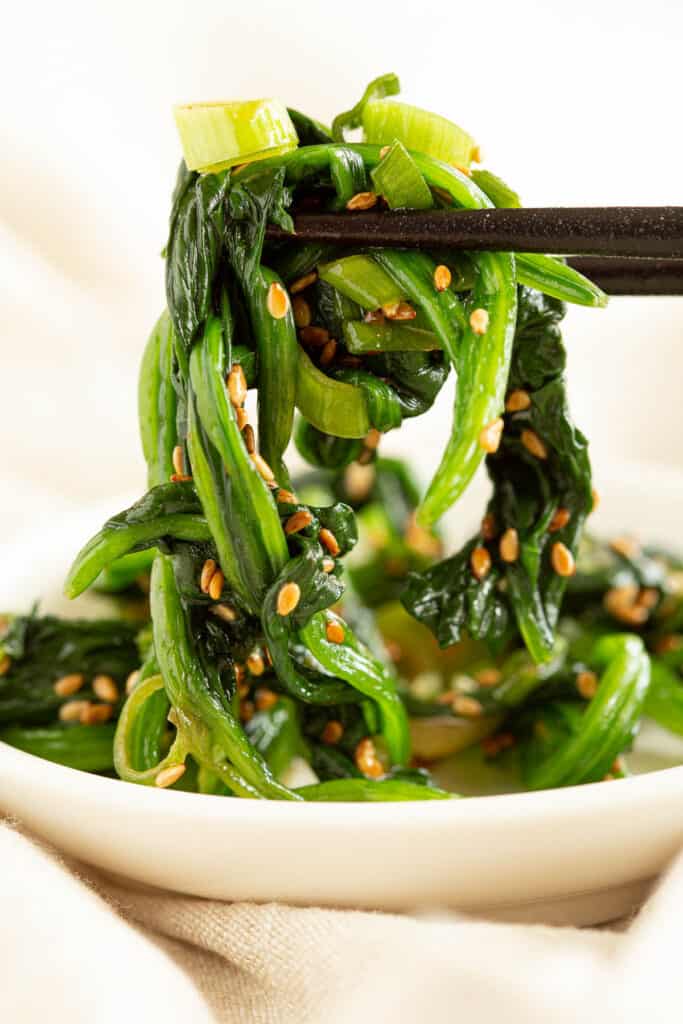
In This Post You’ll Learn
Why We Love This
Sigeumchi namul is deliciously light, healthy and refreshing, and a great way to get extra greens into your diet!
It’s also fast and easy to prepare, making it the perfect side dish for Korean BBQ or bibimbap rice bowls.
This simple spinach recipe is made with easy, everyday ingredients, so you can make it any day of the week with no special planning required.
Related: Bulgogi Chicken / Dubu Jorim Spicy Tofu
Make Ahead!
This side dish is great served cold, so it’s easily made ahead. Store it in the fridge in an airtight container up to a few days in advance. Save yourself some time, and have a delicious go-to Korean banchan on hand when you need it most.
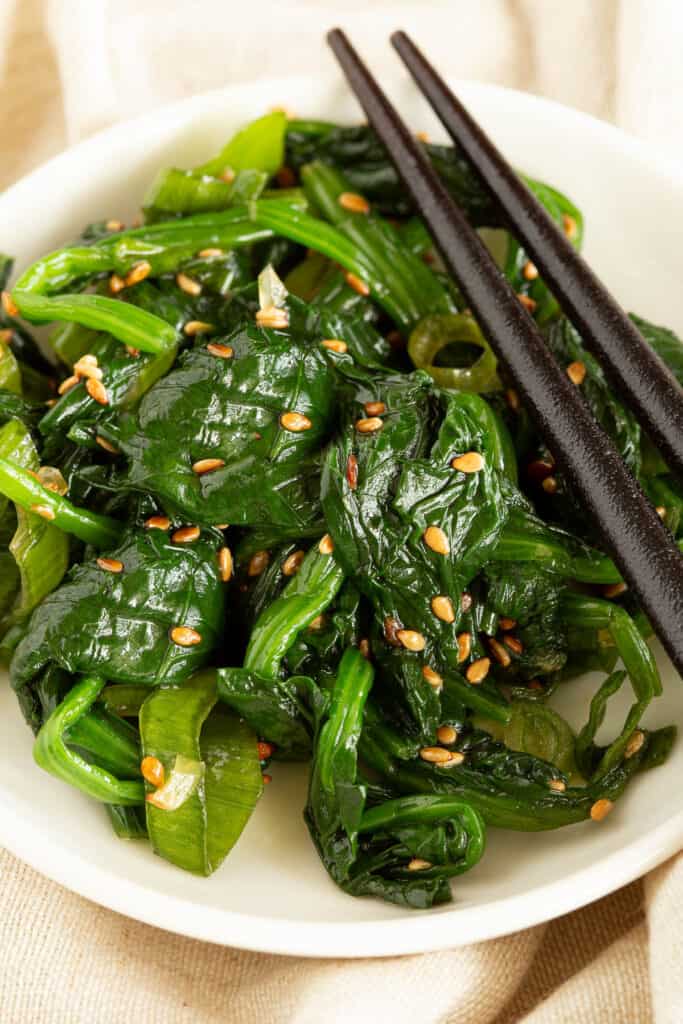
What is Sigeumchi Namul?
Sigeumchi namul (시금치나물) is a popular Korean banchan or side dish also known as seasoned spinach or Korean spinach salad.
It’s made with blanched spinach seasoned with common Korean ingredients like soy sauce, garlic, sesame oil and sesame seeds.
Sigeumchi namul is often served alongside bibimbap rice bowls, stirred through chapchae noodles or rolled up into kimbap / gimbap (Korean style rolled sushi).
What You’ll Need
- Spinach – If you have a Korean grocer near you, you may be able to use Korean or Chinese spinach! You’ll notice this type of spinach has skinnier stalks than it’s English counterparts (see image below). Otherwise, just use any kind of spinach you like – regular spinach, baby spinach or English spinach etc. You can also sub with choy sum, gai lan or bok choy if you prefer (you may like to remove any thicker, firm stems if you do). Frozen spinach is also fine, just skip the blanching!
- Green Onion / Spring Onion – For extra flavour. We love using both the green and white parts.
- Soy Sauce – We prefer to use regular or light soy sauce for a more delicate flavour. Avoid dark soy sauce as it may be too overpowering. If you want it sweeter, you could try substituting with kecap manis.
- Sesame Oil – If you don’t like the flavour of sesame oil, feel free to sub with olive oil.
- Sesame Seeds – We love the extra nuttiness from toasted sesame seeds! Sub with gomashio sesame salt for a little extra salty zing.
- Garlic – An essential ingredient in Korean food! We love the bite it gives, especially when using fresh garlic. Sub with 1/2 tsp of garlic powder.
- Sugar – While sugar is traditional in the spinach seasoning, it’s not always to everyone’s tastes. Leave it out if you’re not sure.
- Salt – Another ingredient you can adjust (or leave out) according to your preference. We like that it balances the sweetness of the spinach leaves.
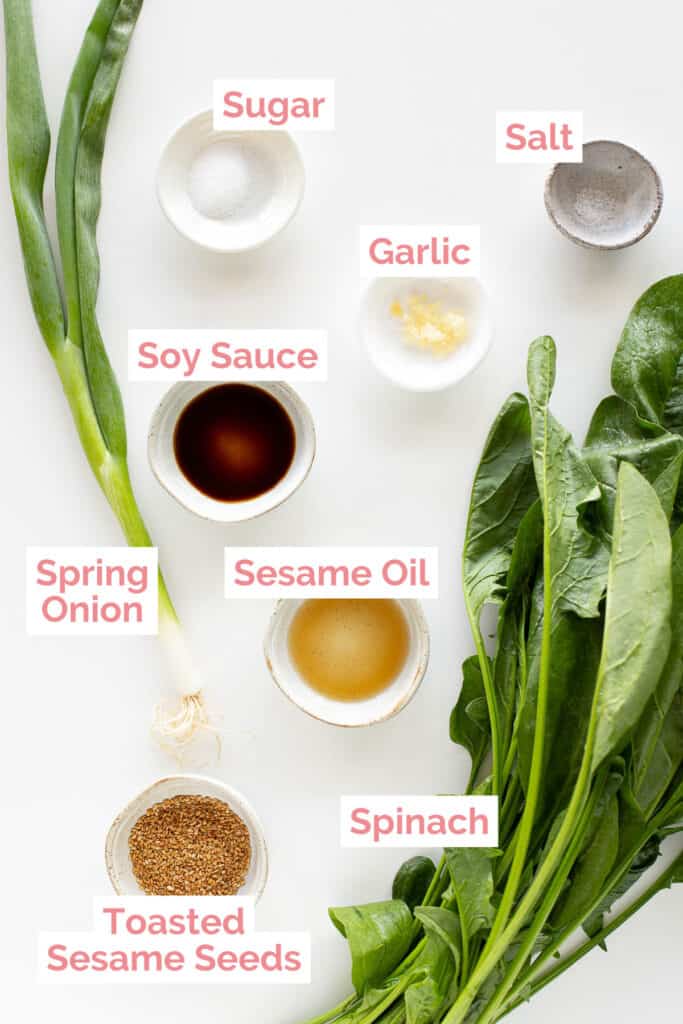
How to Make Korean Seasoned Spinach
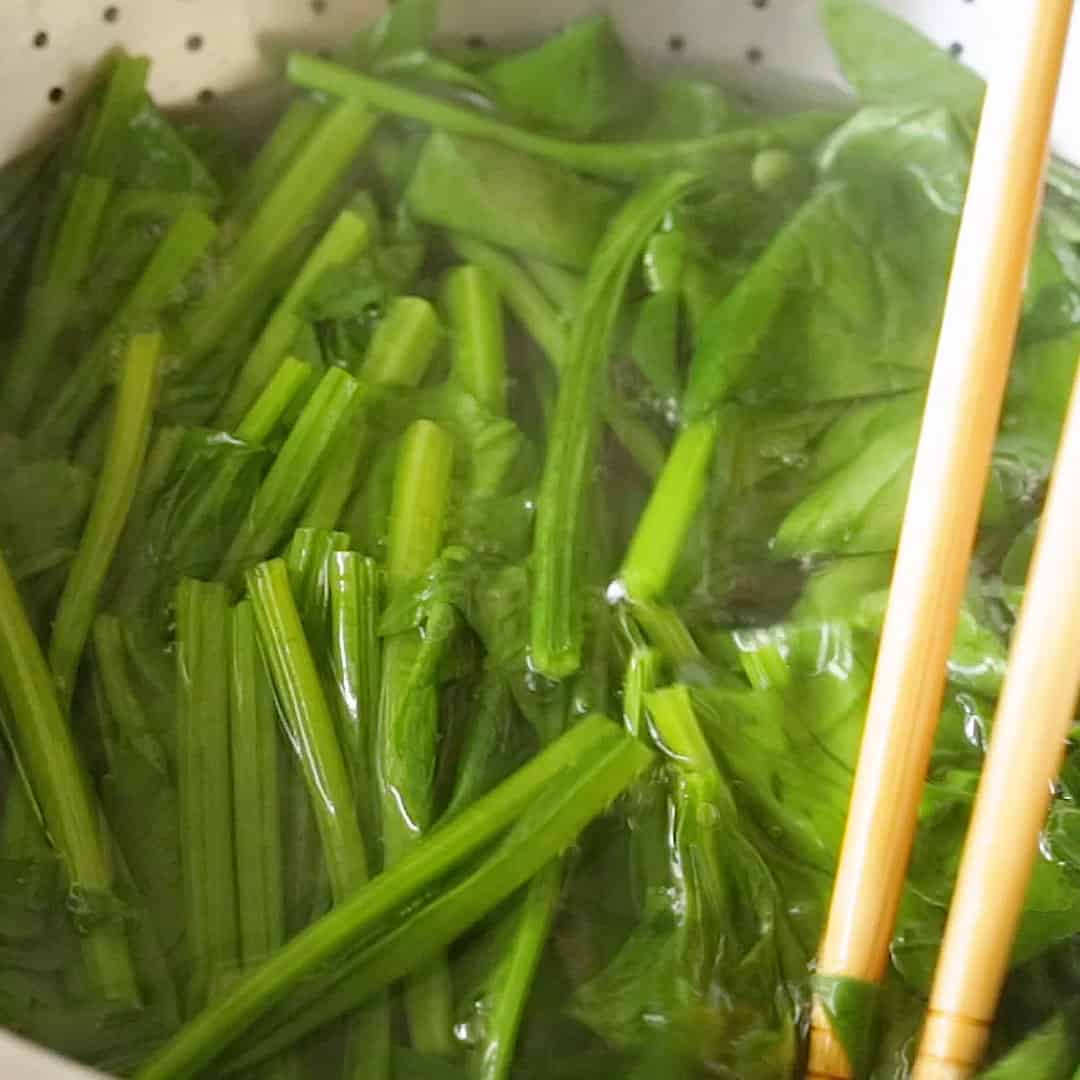
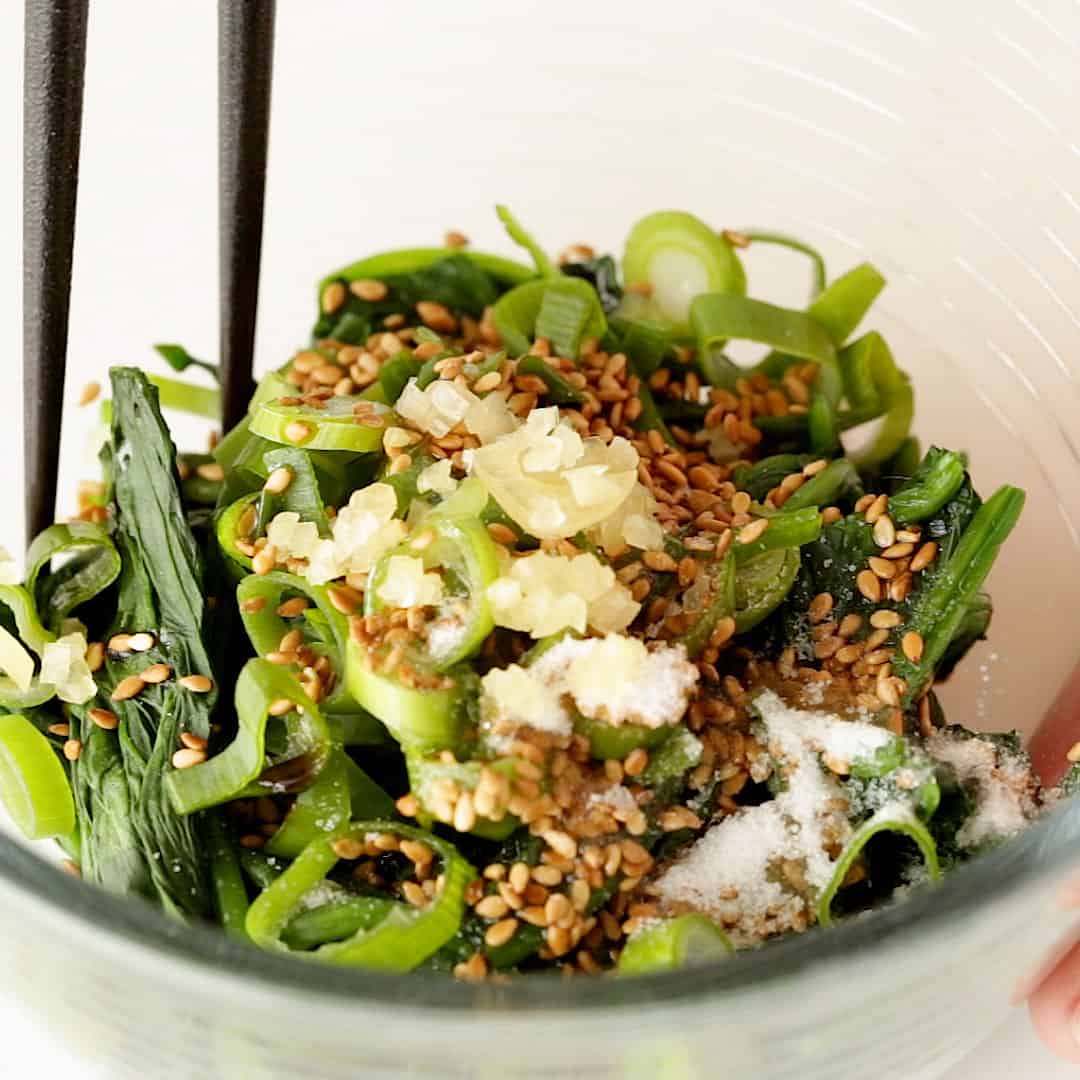
First, gather your ingredients: See recipe card below for measurements.
- Bring a small pot of water to the boil and add the salt. Add the spinach and blanch for 30 seconds – 1 minute, until soft.
- Drain, rinse with cold water to cool down, then squeeze out as much water out of the spinach as possible. Transfer to a small bowl.
- Add the spring onion / green onion and seasoning ingredients (soy sauce, sesame oil, toasted sesame seeds, garlic and (optional) sugar). Mix well to coat the spinach evenly and serve. Optional: Garnish with more toasted sesame seeds.
- Serve as a side dish, or straight on top a bowl of bibimbap.
Wandercook’s Tips
- Spinach – Make sure to squeeze out as much liquid as possible after blanching. If you’re using long spinach leaves with their stems, you may like to chop them up into smaller chunks once blanched. This makes it easier to mix through the seasonings.
- Blanching – We like to use a metal colander while blanching the spinach. This makes it really easy to lift it out and drain once cooked.
- Temperature – Sigeumchi namul is equally delicious served hot or cold!
- Storage – Once cooked and cooled, store leftover seasoned spinach in an airtight container in the fridge for around 2-3 days. We don’t recommend freezing this recipe.
FAQs
Korean seasoned spinach is most often served on bibimbap with other banchan like sukju namul (seasoned bean shoots) or kong namul (seasoned soybean shoots), kimchi, cucumber and pickled carrot.
Since it has such a light and subtle flavour, sigeumchi namul can easily be served alongside steak, grilled chicken or any of your favourite BBQ recipes.
It would be a great addition to bento boxes, alongside small portions of daikon pickles, crispy fried chicken or cold tofu. You could also serve it with rice bowls, noodle bowls or chop it up and add it into crispy spring rolls.
P.S. Why not try it in spinach triangles?
Yep, you can! Defrost them first and make sure to squeeze out as much excess water as possible before using in the recipe.
Variations
- Make it Spicy – Add gochugaru (Korean chilli flakes) to taste. Or drizzle your seasoned spinach with a little bibimbap sauce or homemade gochujang sauce!
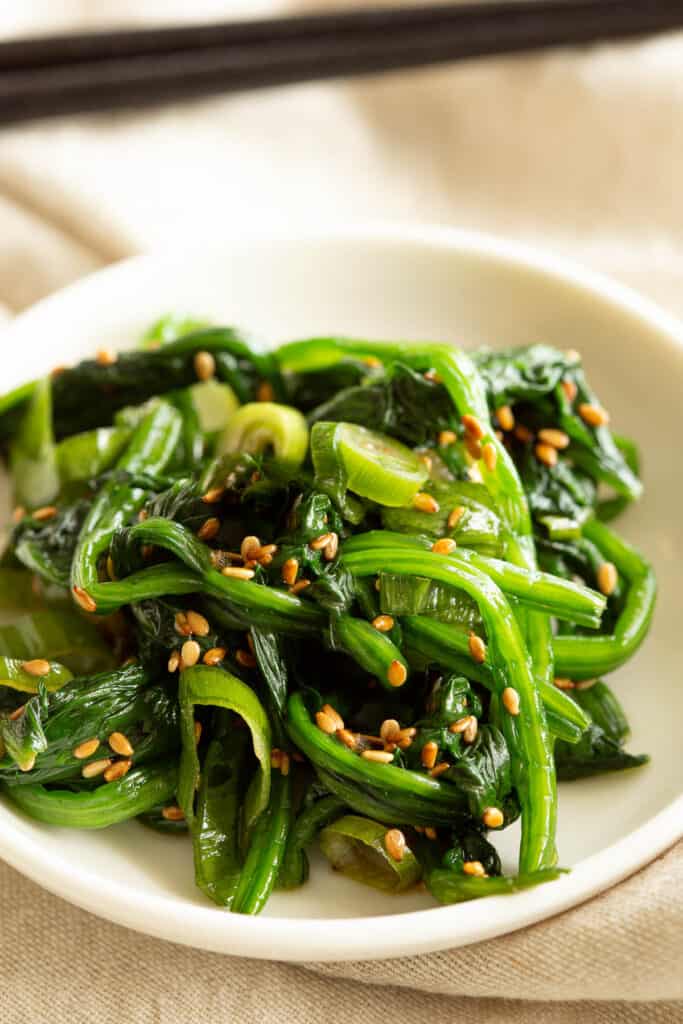
Try these amazing recipes next:
★ Did you make this recipe? Please leave a comment and a star rating below!
Ingredients
- 200 g spinach 7 oz, Chinese or regular spinach, sub frozen
- ½ spring onion / green onion thinly sliced
For the seasoning
- 1 ½ tbsp soy sauce
- 1 tbsp sesame oil
- 1 tbsp toasted sesame seeds
- ½ garlic chopped finely
- ½ tsp sugar omit for a savoury finish
- ¼ tsp salt
Instructions
- Bring a small pot of water to the boil and add the salt. Add the spinach and blanch for 30 seconds – 1 minute, until soft.¼ tsp salt, 200 g spinach
- Drain, rinse with cold water to cool down, then squeeze out as much water out of the spinach as possible. Transfer to a small bowl.
- Add the spring onion / green onion and seasoning ingredients (soy sauce, sesame oil, toasted sesame seeds, garlic and (optional) sugar). Mix well to coat the spinach evenly and serve. Optional: Garnish with more toasted sesame seeds.½ spring onion / green onion, 1 ½ tbsp soy sauce, 1 tbsp sesame oil, 1 tbsp toasted sesame seeds, ½ garlic, ½ tsp sugar
- Serve as a side dish, or straight on top a bowl of Bibimbap.
Video
Recipe Notes
- Spinach – Make sure to squeeze out as much liquid as possible after blanching. If you’re using long spinach leaves with their stems, you may like to chop them up into smaller chunks once blanched. This makes it easier to mix through the seasonings.
- Blanching – We like to use a metal colander while blanching the spinach. This makes it really easy to lift it out and drain once cooked.
- Temperature – Sigeumchi namul is equally delicious served hot or cold!
- Storage – Once cooked and cooled, store leftover seasoned spinach in an airtight container in the fridge for around 2-3 days. We don’t recommend freezing this recipe.
- Make it Spicy – Add gochugaru (Korean chilli flakes) to taste. Or drizzle your seasoned spinach with a little bibimbap sauce or homemade gochujang sauce!
Nutrition
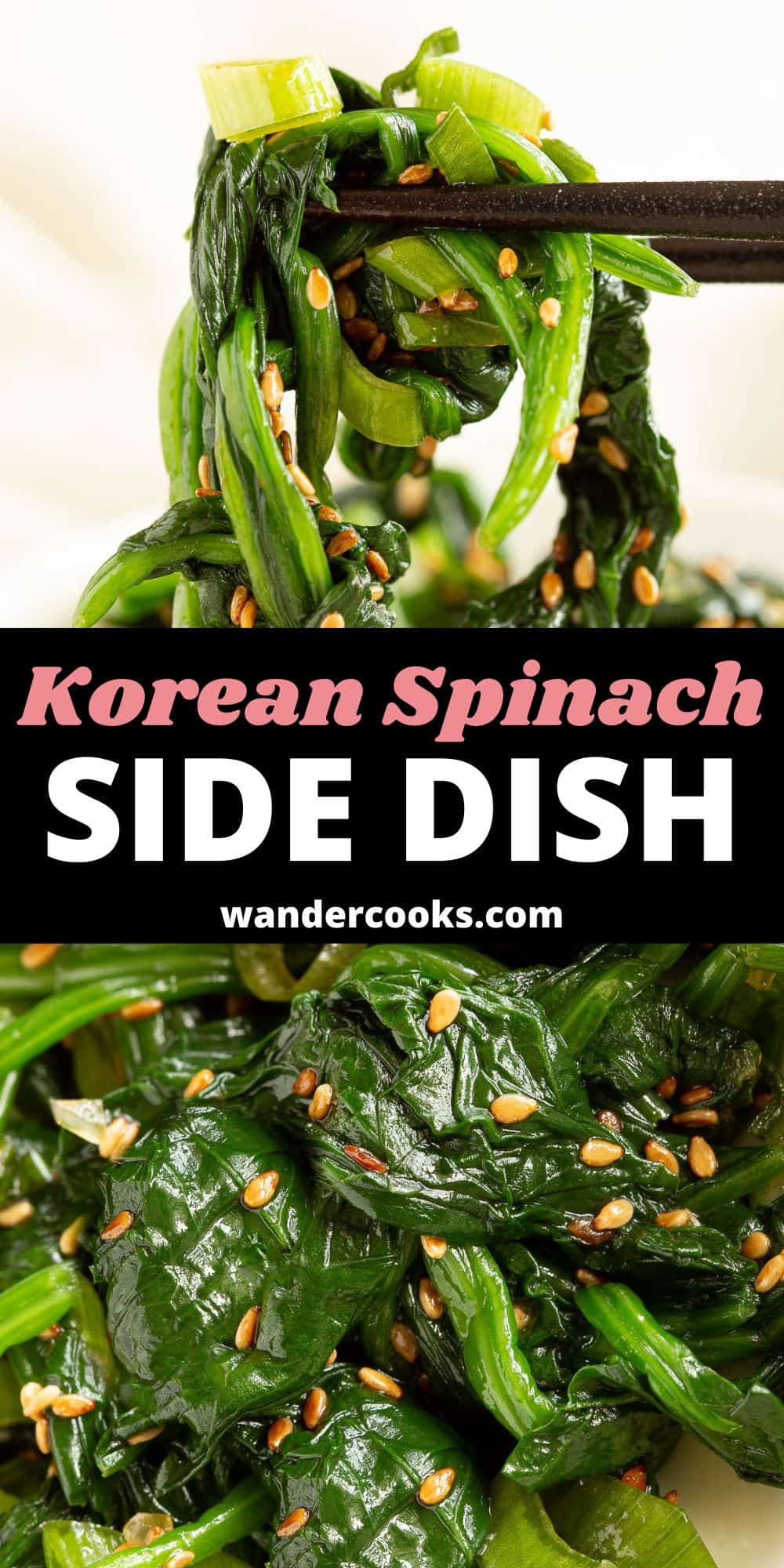

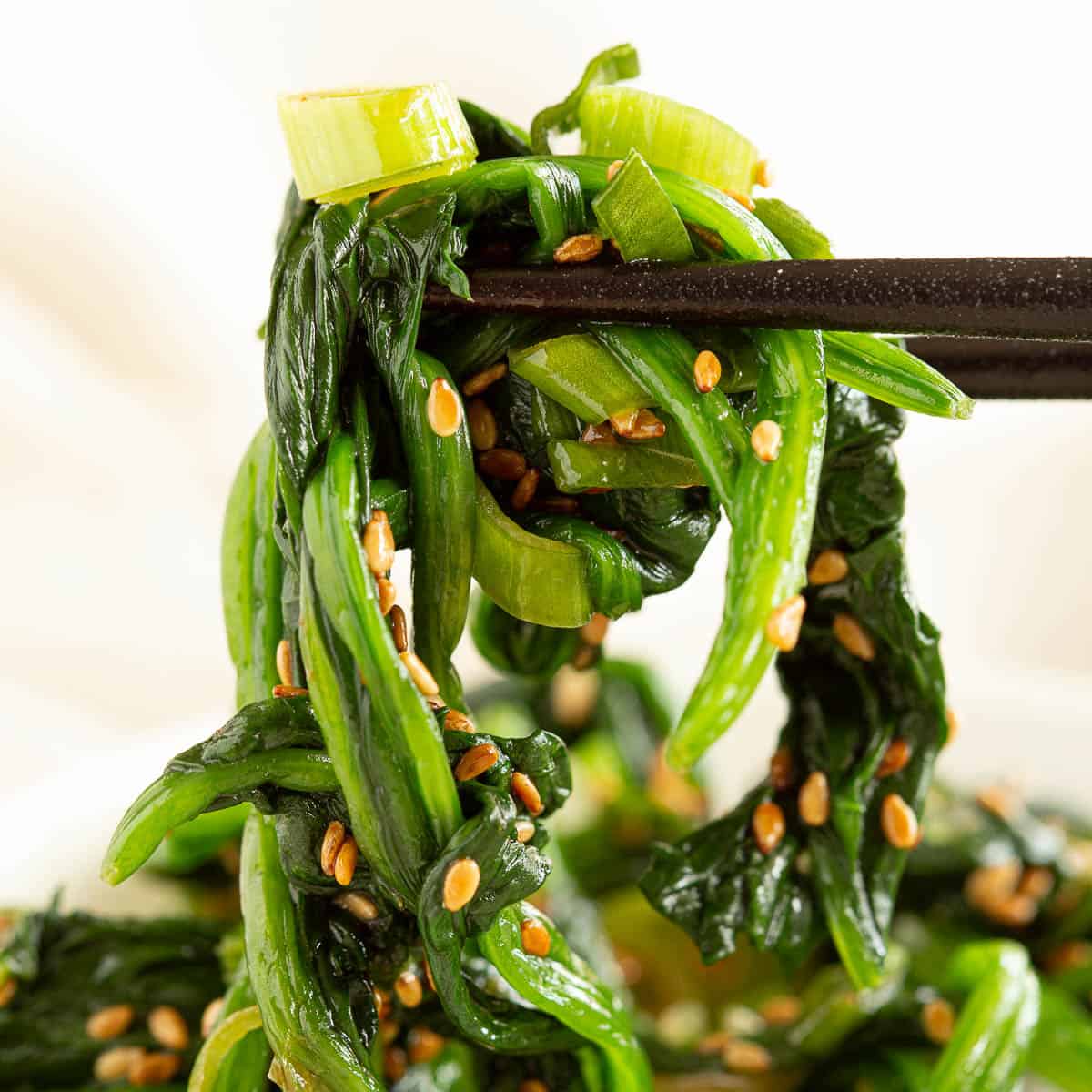



No Comments